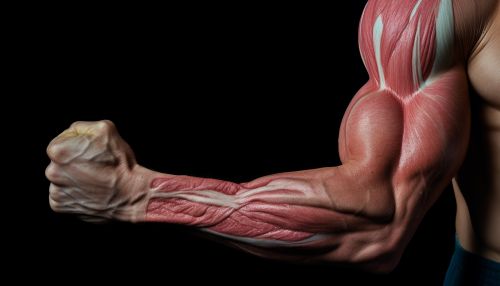Biological Implications of Microgravity on Human Muscles
Introduction
Microgravity, also known as weightlessness, is a condition encountered in space where the force of gravity is so weak that weight effects are negligible. This environment has significant biological implications on human muscles, leading to muscle atrophy and other physiological changes. This article explores the biological implications of microgravity on human muscles in detail.
Microgravity and Muscle Atrophy


In a microgravity environment, the human body undergoes various physiological changes, one of the most significant being muscle atrophy. Muscle atrophy is the decrease in muscle mass and strength due to lack of use. In microgravity, the muscles used for tasks such as maintaining posture or moving against gravity on Earth are not needed, leading to their atrophy.
Effects on Skeletal Muscles
Skeletal muscles, which are responsible for movement and maintaining posture, are particularly affected by microgravity. The lack of gravity-induced stress leads to a decrease in muscle mass, strength, and endurance. This is particularly evident in the lower limbs and the back muscles, which are used extensively for posture and locomotion on Earth.
Effects on Cardiac Muscles
The heart, a muscle that constantly works to pump blood throughout the body, also experiences changes in microgravity. The heart becomes less efficient, leading to a condition known as cardiac atrophy. This can result in decreased cardiac output, lower blood pressure, and other cardiovascular issues.
Molecular and Cellular Changes
On a molecular and cellular level, microgravity affects muscle tissue in several ways. There is a decrease in protein synthesis, an increase in protein degradation, and changes in muscle fiber composition. These changes can lead to a shift from slow-twitch (Type I) muscle fibers to fast-twitch (Type II) muscle fibers, further contributing to muscle atrophy.
Countermeasures
Several countermeasures have been developed to mitigate the effects of microgravity on human muscles. These include resistance and aerobic exercise, nutritional strategies, and pharmacological interventions. Despite these efforts, complete prevention of muscle atrophy in microgravity has not yet been achieved.
Future Research
Future research in this field is aimed at better understanding the underlying molecular and cellular mechanisms of muscle atrophy in microgravity. This could lead to the development of more effective countermeasures, improving the health and performance of astronauts on long-duration space missions.
